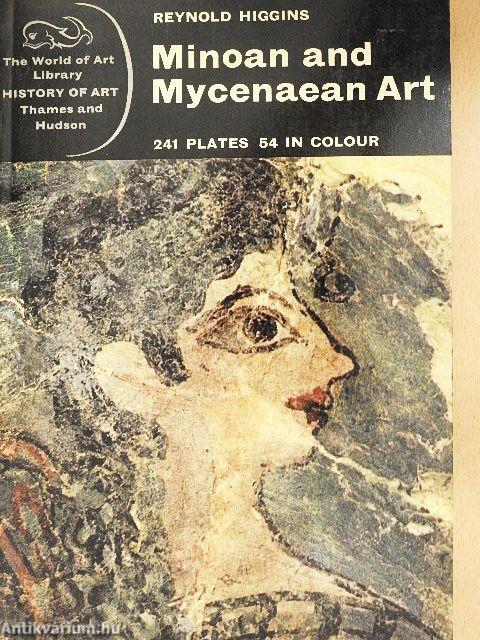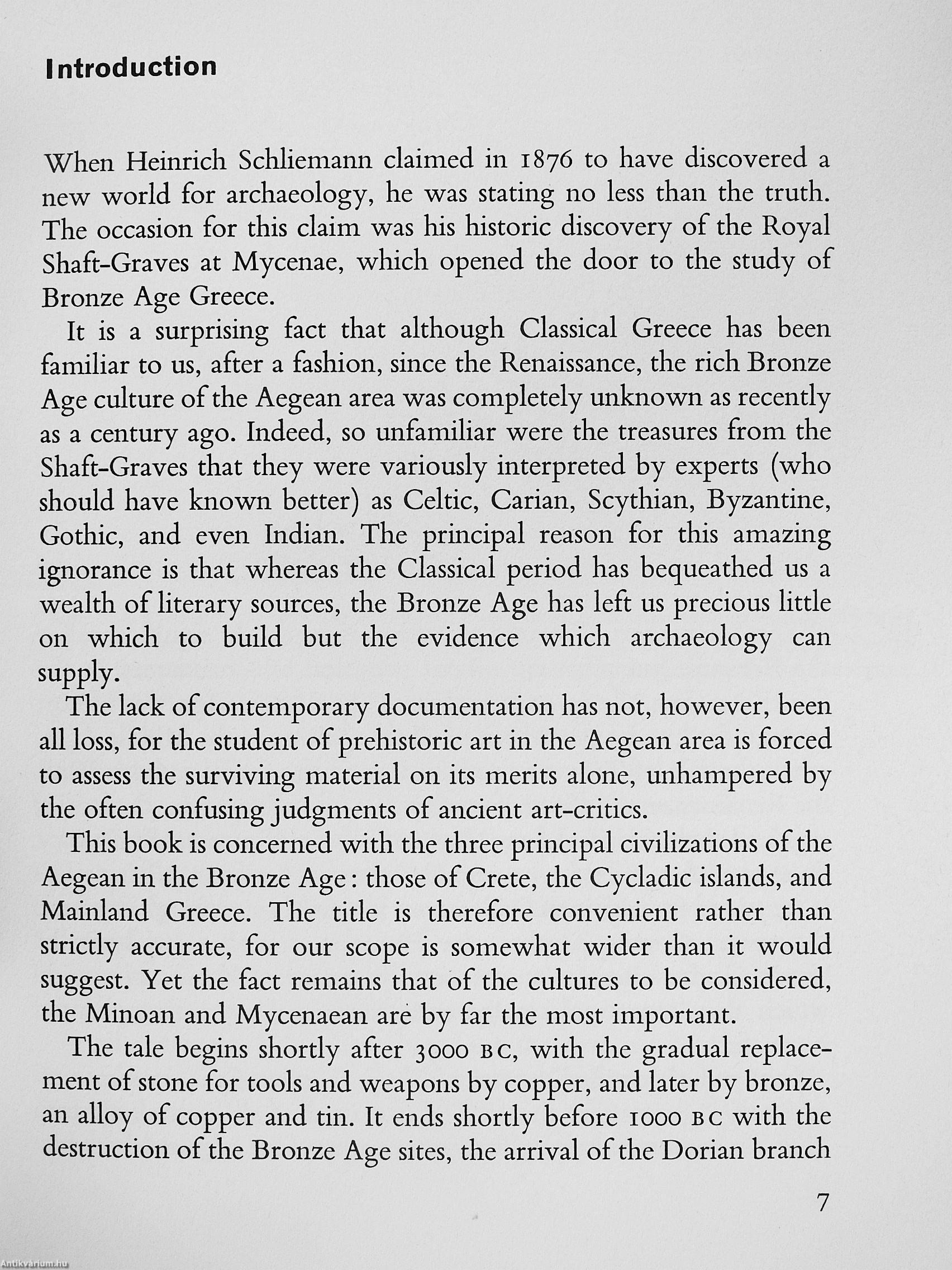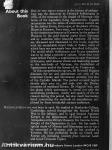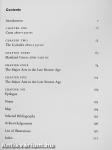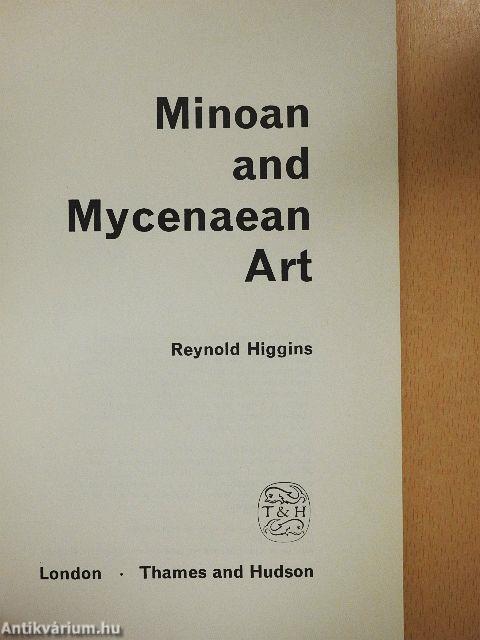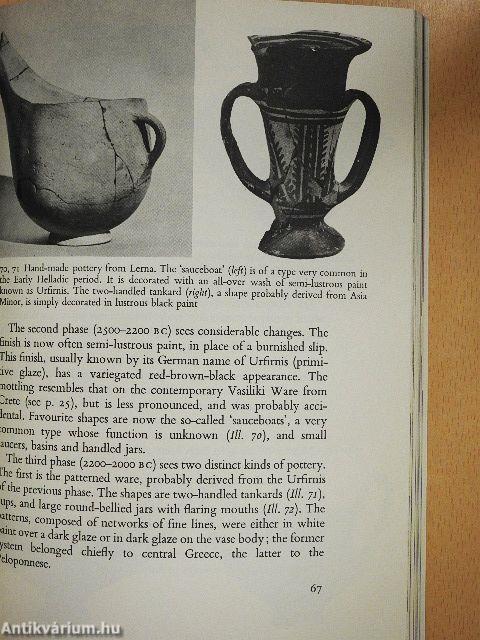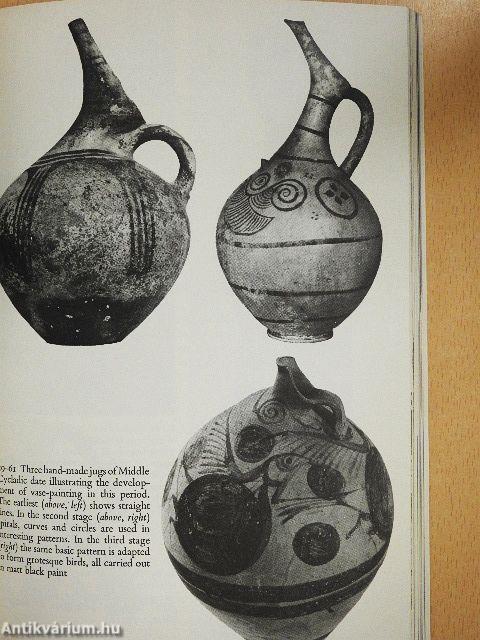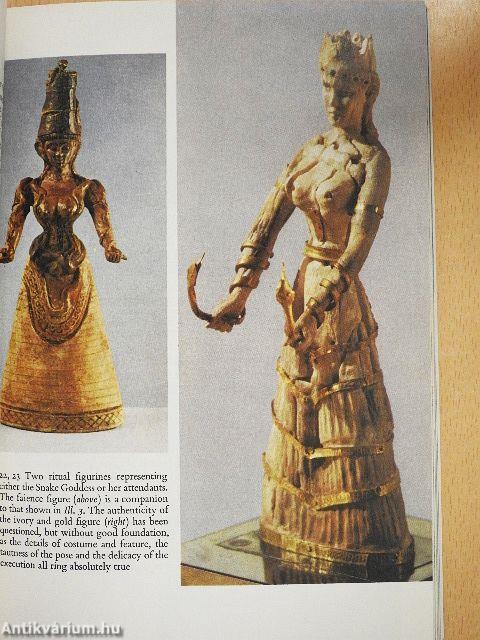1.104.061
kiadvánnyal nyújtjuk Magyarország legnagyobb antikvár könyv-kínálatát

VISSZA
A TETEJÉRE
JAVASLATOKÉszre-
vételek
Minoan and Mycenaean Art
| Kiadó: | Thames and Hudson Ltd. |
|---|---|
| Kiadás helye: | London |
| Kiadás éve: | |
| Kötés típusa: | Ragasztott papírkötés |
| Oldalszám: | 216 oldal |
| Sorozatcím: | The World of Art Library-History of Art |
| Kötetszám: | |
| Nyelv: | Angol |
| Méret: | 21 cm x 15 cm |
| ISBN: | 0-500-20057-2 |
| Megjegyzés: | Fekete-fehér és színes fotókkal. |
naponta értesítjük a beérkező friss
kiadványokról
naponta értesítjük a beérkező friss
kiadványokról
Előszó
TovábbFülszöveg
; ?.^-5° NET IN UK ONLY
About this One great EVENTS in the history of archaeo-
D I logy was the discovery by Heinrich Schliemann, in DOOK of the treasures in the citadel of Mycenae—the
home of the legendary King Agamemnon. Equally momentous was the series of excavations carried out by Sir Arthur Evans, from 1900, at the palace of King Minos at Knossos. Ever since, men have been stirred by the mysterious frescoes at Knossos; by the palace of Phaistos; by the gold funeral masks from Mycenae; and by countless other beautiful artefacts. All these are discussed and illustrated in this book, together with the remarkable recent finds at Zakro, many of which have not previously been described in English. The world which Schliemann and Evans unearthed was in no sense a primitive culture. More than 1000 years before Pericles, a sophisticated court flourished at Knossos, until disaster struck and leadership passed " to the war-lords of Mycenae, the forefathers of
Agamemnon and of the... Tovább
Fülszöveg
; ?.^-5° NET IN UK ONLY
About this One great EVENTS in the history of archaeo-
D I logy was the discovery by Heinrich Schliemann, in DOOK of the treasures in the citadel of Mycenae—the
home of the legendary King Agamemnon. Equally momentous was the series of excavations carried out by Sir Arthur Evans, from 1900, at the palace of King Minos at Knossos. Ever since, men have been stirred by the mysterious frescoes at Knossos; by the palace of Phaistos; by the gold funeral masks from Mycenae; and by countless other beautiful artefacts. All these are discussed and illustrated in this book, together with the remarkable recent finds at Zakro, many of which have not previously been described in English. The world which Schliemann and Evans unearthed was in no sense a primitive culture. More than 1000 years before Pericles, a sophisticated court flourished at Knossos, until disaster struck and leadership passed " to the war-lords of Mycenae, the forefathers of
Agamemnon and of the heroes of the Trojan war.
In this comprehensive survey, Dr Reynold Higgins discusses the art and architecture not only of the important Cretan and Mycenaean cultures, but also of the Cycladic Islands. The period covered begins shortly after 3000 bc, and ends with the Dorian invasioiis of mainland Greece. Dr Higgins' text, and the plates which accompany it, reveal not only the astonishing profusion, variety and quality of the art created during this period, but also much fascinating detail concerning the methods of manufacture employed by these wonderful ancient craftsmen.
Reynold Higgins was born in 1916. He studied at Pembroke College, Cambridge, served throughout the Second World War in the infantry, and in 1947 became Assistant Keeper in the Department of Greek and Roman Antiquities at the British Museum. He became Acting Keeper of the Department in 1975. He has made a special study of Minoan and Mycenaean art; in 1955 he excavated at Mycenae, and he has worked at Knossos. He has published books on Greek and Roman art, including Jewellery from Classical Lands and Greek Terracotta Figures.
THAMES and HUDSON 30 Bloomsbury Street London WCIB 3QP Vissza



